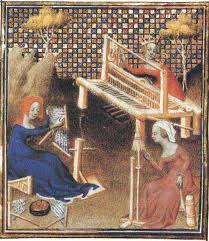 Ths episode is the first of 3 to bring us up to date with the history of Europe to the time of Henry IVth. This week it's all about the Economic development of Europe, and about some of the technological change that impacts on it
Ths episode is the first of 3 to bring us up to date with the history of Europe to the time of Henry IVth. This week it's all about the Economic development of Europe, and about some of the technological change that impacts on it
131 The History of Europe Part V

Here’s a good site for those wanting to know more about iron in the middle ages.
http://www.mindat.org/article.php/1928/22.+Iron+-+Through+The+Ages
Enjoyed the pause in the narrative this week, but really just wanted to get on here and say that this is the first time in some 40 episodes that I have been up to date. Too many history podcasts methinks. The last week for me has been a trip through all of Richard II’s reign. Good job you did there, if I might say so.
Enjoy your summer break.
Thanks for the link Luise!
And Dan, congratulations, welcome. A podcast junkie? Dare I ask what other podcasts?
Brilliant! I enjoyed (believe it or not) the minutiae about the evolution of suspensions on medieval carts. And now I shall never see the word “company” without thinking of a bunch of merchants around a table, breaking bread. Entomology (no wait, that’s bugs, isn’t it?) er- etymology (i.e., word origins) has always interested me, so thanks for so regularly putting that sort of thing in. (It so happens I already knew about how “pig iron” got its name.)
Yes, I was particularly pleased with that…cum panne, all fits so well. And I can suggest to the boss that we break bread together before my performance review each year….
A fascinating topic and a very listenable reading voice! I don’t know if this adds anything here but I wrote an audio drama about changing technology and its impact on the environment which you can listen to here: http://www.redthreadproductions.org/conservation/
I was particularly interested in changing ideas about time and nature. Please excuse any solecisms I am a playwright rather than a historian! Best wishes.
Hello David, in this episode you mention how the spinning wheel improved production of both wool and cotton. I’ve always thought that the “other” cloth of Europe after wool was linen. Flax can be grown in much cooler climates than cotton which requires quite a long growing season. Today people who spin with wheels as a craft/hobby use the large “walking” wheel for wool and the smaller flax wheel for linen. Did you mean linen rather than cotton when you spoke about the introduction of the spinning wheel?
I do love the podcast.
Hi Merri, and the honest answer is that I do not know It was a while ago, and I have the memory capabilities that would make a Goldfish hang its head in shame.I am aware that cotton was available in medieval Europe although mainly grown in southern Europe until the arrival of America. So maybe you are right.I do love these subjects – and people seem to have enjoyed the wool episode, and I have quite wrongly underplayed flax…I will put it on the list for another episode. I rarely forget such ideas, but often it takes a couple of years to get round to it!